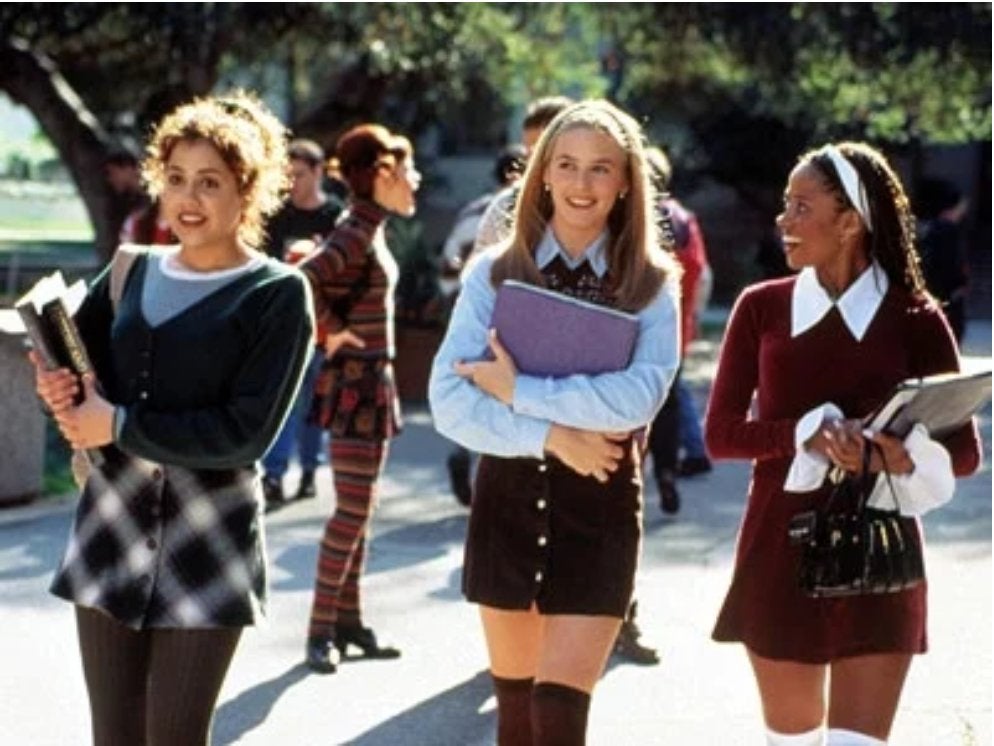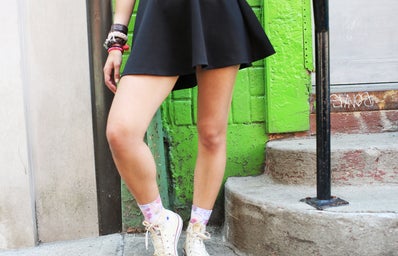The mini skirt is a staple in almost every women’s wardrobe. Whether it’s a flare or a pencil style, mini skirts are versatile and timeless. However, their historical significance, including Mary Quant and everything before, after and in between, often turns mindless. However, the mini skirt has cultural significance that often goes unchecked.
One of the first people to wear mini skirts was actually Jesus Christ himself. In fact, the mini skirt was a mainstay of many groups during Ancient times including Ancient Egypt and Ancient China. For much of The Middle Ages, the mini skirt went out of fashion all over the world in favor of more conservative floor-length hems. The closest to a mini skirt would be traditional kilts from Scotland.
The first time hemlines would be hiked up in a major way would be in the 20s, when women began to scandalously show their midcalves and ankles. Flappers and dancers were all about this trend because it was more moveable and was seen as a sign of rebellion. Coco Chanel was a trailblazer for women who favored this hem length, especially with more fashion-forward, comfortable sportswear called la mode sportive. Jean Patou designed sportswear for tennis play Suzanne Lenglen. Women’s legs were on full display, which of course led to sexism. Some people went as far as to blame this shortened hem length for the Stock Market Crash. The hemline index came into effect. This also began a trend that hemlines shorten in times of economic prosperity and fall in times of economic hardship.
This hem length stayed in fashion during the more practical 40s, mostly due to the rationing of fabric for the war. However, after the war, Christian Dior’s iconic New Look made ankle-length hem length popular. Stepford Wives-esuqe dressing of the 50s offered a love of more conservative dressing, but by this time the hem length was already so popular, that it was more often the fullness of the skirt that make it conservative, not the fact that women’s ankles were showing. The rock n roll era of the 50s meant skirts needed to be moveable, which meant less fabric, which caused scandalous wardrobe mishaps, even if skirts have coverage sewn underneath. Couture and Hollywood followed suit with the demand for shorter, flirty, and more rebellious hemlines and began to experiment with Balenciaga’s scandalous above-the-knee sack dress or Yves Saint Laurent’s iconic Trapeze line that he designed for Dior in 1958, which is the fit and flare silhouette we come to associate with women during this time period (just look at Betty Draper from Mad Men or Midge from The Marvelous Mrs. Maisel). Space-age films and sci-fi films took a hint and saw where skirt hems were going and included futuristic ultra-short thigh-length skirts.
This led to what Diane Vreeland, the creative director at Vogue in the 60s called “the Youthquake.” Like the 20s, the young were feeling sexually liberated and prompting societal changes, thus pushing boundaries in art forms like fashion as well. People started to take inspiration from the futurism and space-age trend in film and brought it into mainstream fashion. Mary Quant, was a trailblazing British designer who worked in the London boutique movement. Mary Quant was inspired by school-girl dressing and the outfits tap dancers wore. This ended up being the biggest, if not one of the biggest trends to come out of the 20th century. Courreges brought the miniskirt to international acclaim with his 1964 collection that made the mini skirt into an haute couture staple. While Paco Rabanne experimented with materials and invented the chainmail mini dress. Emanuel Ungaro also experimented with synthetics and plastics with the mini skirt silhouette.

This mini skirt boom was incredibly controversial. Schools began banning the hem length, while fashion icon Coco Chanel notoriously called knees a woman’s ugliest feature, and why would a woman want to show them off? However, that didn’t matter then as fashion icons and women’s idols Jackie Kennedy and Audrey Hepburn wore mini skirts as their wedding dresses. After that, it was clear that the mini skirt was here to stay.
The mini skirt did take a hiatus in the 70s with the hippie trend preferring peasant skirts and flowy dresses, however, the mini skirt came back in a major way in the 80s. While the midi skirt was popular for the working girl, as a more formal length for the office or even senior prom, the mini skirt was a favorite for teen girls and young women. Although, some women dared to wear a longer mini skirt that went to the mid-knee in the office. Ra-ra skirts and denim skirts were all the rage. Jean-Paul Gaultier even popularized skirts as a unisex item with his iconic plaid kilt collection in 1984. This offered much-needed versatility with different fabrics like leather and tweed. Artists like Cyndi Lauper and Madonna also wore mini skirts in their music videos, which made the MTV generation fall in love with the versatile wardrobe piece.
This newfound versatility and women in the workplace led to the rise in matching sets in the 90s when Karl Lagerfeld made a signature of Chanel with their iconic skirt dress suits and Gianni Versace’s iconic candy-colored monochromatic campaign. Films like Clueless and Empire Records and Britney Spears’ “Hit Me Baby…One More Time” music video also brought the schoolgirl vibe of the pleated mini skirt back into fashion. Between the Spice Girls’ love of the mini dress and grunge girls loving the plaid skirt trend, it was clear that mini skirts could be worn in any aesthetic, any occasion, any time.

With this newfound cementation in the fashion world, the 2000s saw some experimentation with the mini skirt, which made the skirts even shorter in hem length and lowered where they lay on the body going from the waist to the hips, becoming what is known as the micro skirt. Britney Spears, Paris Hilton, Lindsay Lohan, Christina Aguilera and Nicole Richie became trendsetters in the micro skirt. Denim was the fabric of choice with these skirts and many women were confident enough to wear an ultra crop top with the micro skirt.
In the 2010s, the short hem length started, but where they lay on the body went back to the waist rather than the hips. Circle skirts or skater skirts became a versatile must-have. Ariana Grande, Gigi Hadid and Blake Lively were huge fans of the trend. Pleated skirts also came back into play with American Apparel’s iconic tennis skirt.
Now, the mini skirt is a wardrobe staple that every girl has, whether it’s a denim skirt or a pleated skirt. The mini skirt has also become a staple for the LGBTQIA+ community becoming a genderless clothing item as opposed to a girly tool meant to belittle women. However, in terms of fashion trends, there is a full Y2K comeback, with Miu Miu’s Spring 2022 collection bringing the micro skirt and crop top combo back in a major way. They even continued this trend with their Fall 2022 collection. The takeaway? The mini skirt isn’t going anywhere and has a long and fashionable history for women and people everywhere. So, if you want to be fashionable, just wear a mini-skirt. It’s a staple for a reason.



